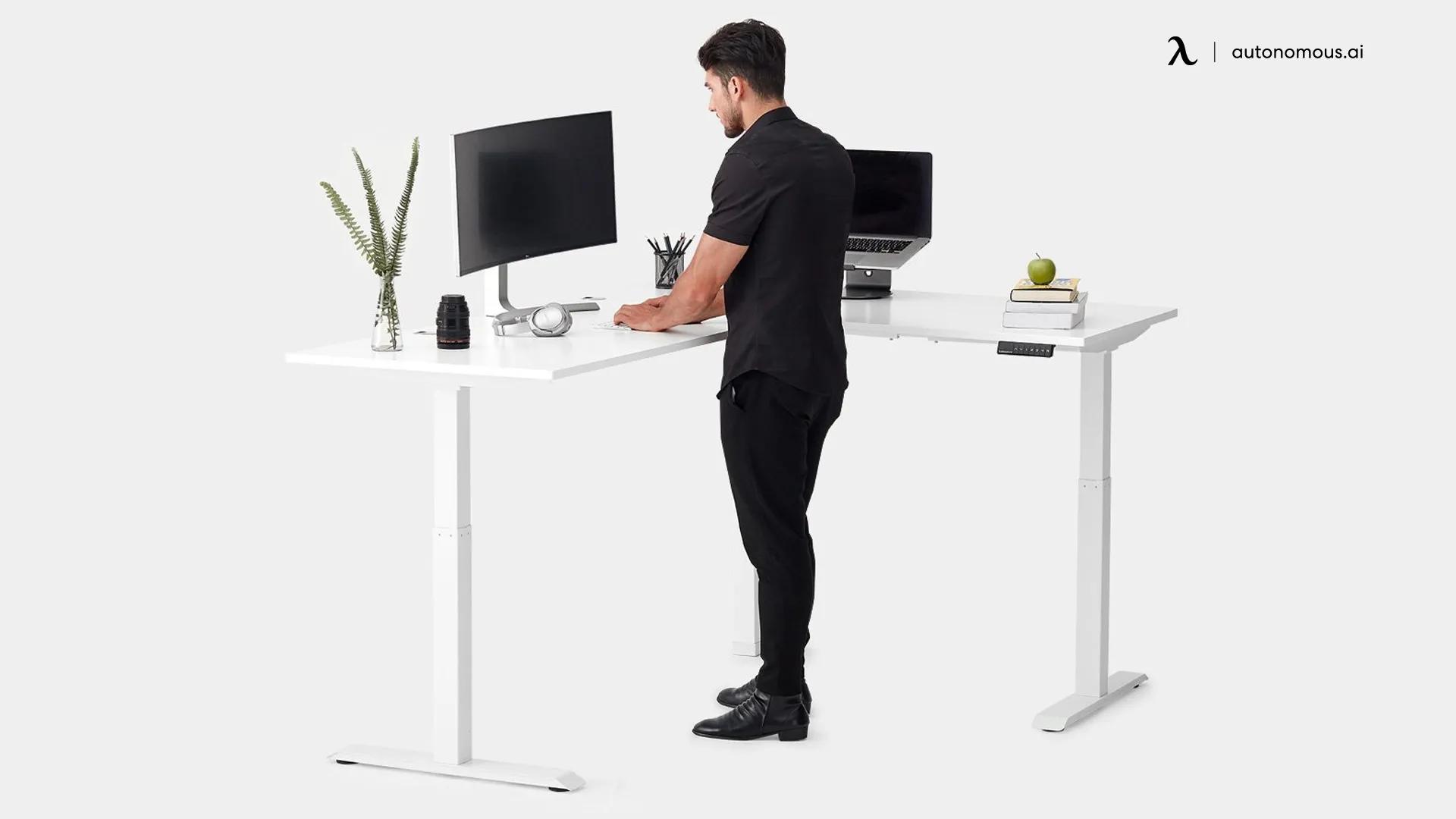
Fix Neck Pain Going Into Shoulder While Working From Home
Table of Contents
In the wake of the COVID-19 pandemic, the world witnessed a seismic shift in work dynamics, with remote work becoming the new norm. This transformation has brought unprecedented flexibility but has also introduced a host of challenges, one of the most common being neck pain going into the shoulder.
As we continue to adapt to this digital age of work, it's crucial to address the physical toll it can take on our bodies.
In this article, we will explore the underlying causes of neck pain extending into the shoulder for remote workers. We will also provide practical solutions and expert insights to help you alleviate discomfort and maintain your well-being while working from home.
What Causes Neck & Shoulder Pain?
Some potential factors contributing to neck pain radiating into the shoulders include:
Poor Posture
Prolonged poor posture, such as slouching while sitting or hunching over a computer, can strain the muscles and ligaments in the neck and shoulders. This strain can result in neck pain radiating into shoulder blades as the muscles work harder to support the head and upper body. Over time, it may lead to muscle imbalances and chronic discomfort.

Muscle Tension
Muscle tension in the neck and shoulders can be caused by stress, anxiety, or overuse of these muscles. Stress and anxiety can lead to the tightening of muscles, which can result in stiffness and pain. Overuse, often seen in activities like lifting heavy objects or carrying heavy bags, can lead to muscle fatigue and neck pain in shoulder blades.
Herniated Discs
Vertebral discs are what function as shock absorbers in the spine. When a disc's supple interior pushes through its hard exterior and puts pressure on adjacent nerves, the condition is known as a herniated disc. If the damaged disc is in the neck (cervical spine), it might lead to tingling, numbness, and neck pain in between shoulder blades.
Pinched Nerves
Pinched nerves in the neck, medically known as cervical radiculopathy, occur when nerves in the cervical spine become compressed or irritated. This compression can result from conditions like herniated discs, bone spurs, or even muscle inflammation. Pinched nerves often cause sharp, shooting pain that can extend into the shoulders, along with weakness and numbness in the arm.
Arthritis
Arthritis can affect the neck and shoulder joints. Osteoarthritis, the most common type, involves the degeneration of joint cartilage, leading to pain, stiffness, and reduced mobility. Rheumatoid arthritis, an autoimmune condition, can cause inflammation in these joints, contributing to pain and discomfort.

Trauma/Injury
Physical trauma or injury to the neck and shoulders can result from accidents, falls, or sports-related activities. Such incidents can cause sprains, strains, fractures, or even dislocations, leading to acute pain and potential long-term issues if not properly treated.
Repetitive Strain
Repetitive movements or poor ergonomics in daily activities or work can lead to overuse injuries. For example, individuals who perform repetitive tasks like typing for extended periods may develop conditions like carpal tunnel syndrome or shoulder impingement, leading to chronic pain in the neck and shoulders.
Poor Sleep
Sleeping in an improper position or on an unsupportive mattress can strain the neck and shoulder muscles. Waking up with a stiff or sore neck and shoulders is a common symptom of poor sleep posture, and it can result in discomfort during the day.

Top 10 Solutions for Office Workers
Here are some remedies to alleviate neck pain for individuals who work from home:
Ergonomic Workspace Setup
Arrange your desk, chair, and computer monitor to promote good posture. Ensure your screen is at eye level and your chair supports the natural curve of your spine. Bring in an office chair with neck support.

Regular Posture Checks
Take short breaks to stand up, stretch, and check your posture. Adjust your seating position if needed, and gently roll your shoulders to relieve tension.
Proper Chair Support
Invest in an ergonomic office chair with lumbar support. Sit back in your chair, keeping your feet flat on the floor and knees at a 90-degree angle.
Monitor Your Screen Time
Limit screen time and take frequent breaks. Use tools like the 20-20-20 rule—every 20 minutes, look at something 20 feet away for at least 20 seconds to reduce eye strain.
Stretching Exercises
Perform neck and shoulder stretches throughout the day. Simple movements like neck tilts, shoulder rolls, and chin tucks can alleviate tension.

Strengthen Neck and Shoulder Muscles
Incorporate strength training exercises into your routine to build the muscles that support good posture. Consult a fitness professional for guidance to discover the best sitting position for lower back pain.
Desk Ergonomics
Organize your workspace efficiently. Keep frequently used items within arm's reach to minimize reaching or straining, and bring in a standing desk.
Monitor Height
Ensure your computer screen is at eye level. If necessary, use a monitor stand or laptop riser to achieve the correct height. The best office chair for back pain comes equipped with varying heights to adjust according to the monitor if you can’t move it.

Phone Usage
Avoid cradling your phone between your neck and shoulder during calls. Use a headset or speakerphone for hands-free communication.
Regular Massage or Physical Therapy
Consider regular sessions with a massage therapist or physical therapist to address muscular imbalances and relieve tension caused by poor posture. You could perform a massage at home by bringing in one of those best recliners for neck pain.

Frequently Asked Questions
When should I seek medical attention for neck and shoulder pain?
While many cases of neck and shoulder pain can be managed at home, it's essential to seek medical attention under certain circumstances:
- Severe Pain: If your pain is intense and persistent despite self-care efforts, consult a healthcare professional.
- Numbness or Weakness: If you experience numbness, tingling, or weakness in your arms or hands, it could indicate nerve compression, requiring immediate evaluation.
- Recent Injury: If your pain follows a recent injury or accident, such as a fall or car crash, seek medical attention to rule out serious underlying issues.
- Persistent Symptoms: If symptoms persist or worsen over time, consult a healthcare provider to identify the root cause and appropriate treatment options.
Always consult with a healthcare professional for a proper diagnosis and personalized treatment plan if you have concerns about neck pain that radiates into your shoulder.
Can stress and anxiety contribute to neck pain that radiates into the shoulder?
Yes, stress and anxiety can contribute to neck pain that extends into the shoulder. When you're stressed or anxious, your body's natural response is to tense up, including the muscles in your neck and shoulders. This prolonged tension can lead to muscle knots and trigger points, resulting in pain that radiates into the shoulder region. Stress-reduction techniques such as relaxation exercises, deep breathing, and mindfulness meditation can help alleviate both the mental and physical aspects of this pain.
Conclusion
Incorporating the strategies mentioned in this article into your daily routine can make a world of difference in alleviating neck pain while working from home. Prioritize your well-being, and enjoy the benefits of a pain-free, productive remote work experience.
Subscribe for a 10% discount on your first order.
Sign up for our weekly update and be the first to know about our specials & promotions.
Faire connaitre

/https://storage.googleapis.com/s3-autonomous-upgrade-3/production/ecm/240301/smartdesk-pro-20-years-1920x540-CTA.jpg)
/https://storage.googleapis.com/s3-autonomous-upgrade-3/production/ecm/240301/smartdesk-pro-20-years-720x1200-CTA.jpg)
/https://storage.googleapis.com/s3-autonomous-upgrade-3/production/ecm/230914/bulk-order-sep-2023-720x1200-CTA-min.jpg)
/https://storage.googleapis.com/s3-autonomous-upgrade-3/production/ecm/240507/pod-may-2024-offer-720x1200-CTA-min.jpg)
/https://storage.googleapis.com/s3-autonomous-upgrade-3/production/ecm/230824/Amanda-8035f52a-7230-4c31-9bda-626fd7c392bf.jpg)